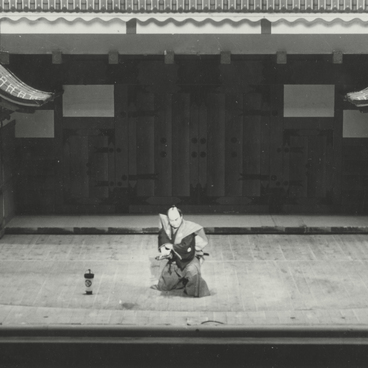The play ‘Kanadehon Chûshingura’ is better known to Europeans under the name ‘47 Samurai’, or ‘47 Ronin.’ The plot was first developed for the theater by the great playwright Monzaemon Tikamatsu in the early 18th century and later picked up by other authors. The creator of the 1748 version, entitled ‘Kanadehon Chûshingura’ (‘The Treasury of Vassal Fidelity’) was Takeda Izumo, a successor to Tikamatsu. At the heart of it lies a real incident from the era of Genroku (late 17th - early 18th centuries). Because of the censorship of that time, theatrical action had to be moved to an earlier epoch (14th century) and the names of the heroes changed. The poster, created in the early 20th century, contains two key points of the performance. Down below, Prince Asano, unjustly condemned, commits hara-kiri. Next to him is his loyal vassal Oboshi Yuranosuke (the historical name of the hero is Oishi Kuranosuke). Above, Yuranosuke, having become a Ronin (that is, a samurai without a master), plans revenge for his master as he is leaving the castle. The artist used the technique characteristic of the cinema: the montage of different moments of action, or action combined with the thoughts of the hero. In the role of ‘montage cut’ is a symbolic cloud.
#1
Poster for the play ‘Kanadehon Chûshingura’
#2
read morehide
Poster for the play "Chûshingura"
Technique
Paper, printing
Collection
Exhibition
7
Open in app
Share



